The Biggest Trees in the World: Trees are our source of life and they symbolize the interconnection of all living things. While you may be used to seeing ordinary trees, a trip across the globe, from Europe to the Tasmanian ancient forests will blow your mind.
Giant trees are defined as having the highest wood volume in a single stem. These trees are tall and large in diameter and, in particular, hold a large diameter high up the trunk.
However, it’s hard to grasp the accurate scale of these towering giants. This is because of the complexity of measuring, mainly if volumes of the branch, trunk, root, or leaf are to be included, so measurements of trees have only been made for a minute number of trees and generally only for the trunk.
1. General Sherman (Sequoiadendrongiganteum)
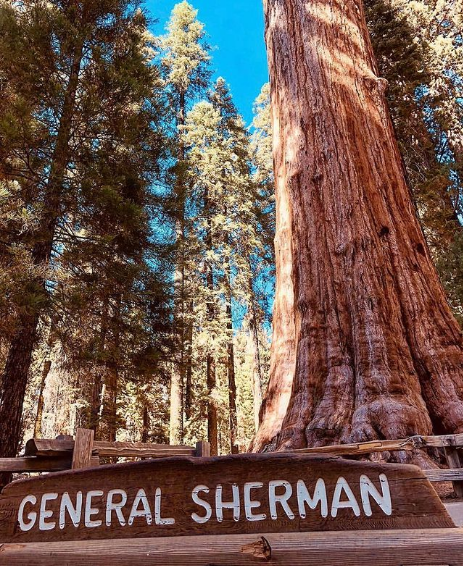
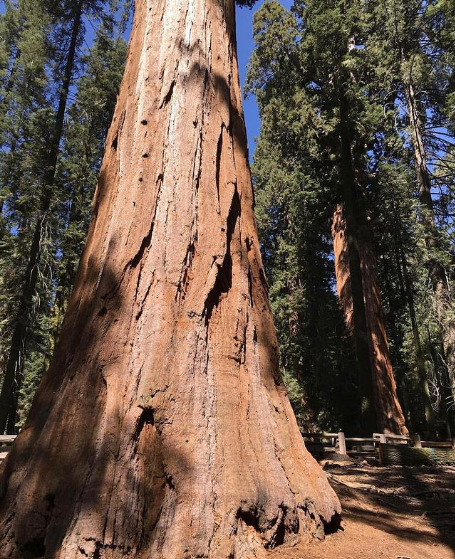
Sequoias are massive and are giant trees on earth in terms of total wood volume; they grow between 5000 and 8000 feet in elevation. According to the Guinness World’s Record, the giant sequoia named General Sherman is the world’s largest living tree boasting a total of 52,500 cubic feet!
It is located in the second oldest park, Sequoia National Park, in the Sierra Nevada Mountains of California, USA. The tree is thought to be 2300-2700 years old.
It is accurately named since this giant sequoia tree is approximately 83.6 meters (274 feet 3.3 inches) in height and has a tape-wrap diameter of 825 centimeters (27 feet).
General Sherman is described often as “the biggest tree in the world” although it is not the tallest. Its base is also not the thickest. It is described as the biggest because it has the most total wood volume, or, more specifically, most total trunk volume. As of 2013, General Sherman’s total volume of wood and bark was 1,591 m3 (56,186 cubic feet) – 1,389 m3 (49,052 cubic feet) in the main trunk.
Research conducted in 2002 estimated General Sherman to be 2,000 years old; however, it’s believed that there are reasonably older trees out there(not yet found), perhaps up to 4,000 years old. This conclusion has been made as the size of a tree does not always indicate the age of the species. The tallest giant sequoia is Redwood Mountain Grove in Kings Canyon National Park at 94.9 m.
2. Hyperion (Sequoia sempervirens)-The Biggest Trees in the World
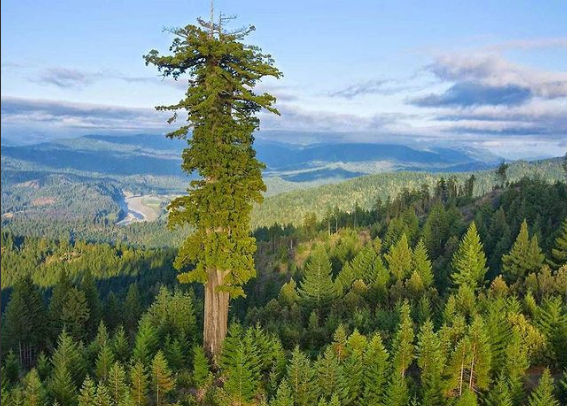
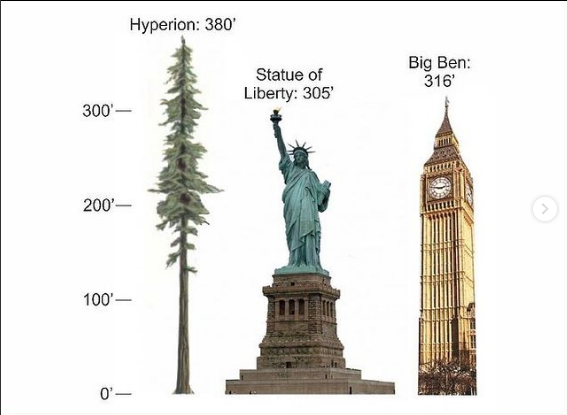
This great 380.1 Feet coast redwood (Sequoia sempervirens) was discovered in 2006 by naturalists Chris Atkins and Michael Taylor. It is located in Redwood National Park, California, in the United States Recorded as the world’s tallest known living tree. It was 380 feet and 1 inch (115.85 meters) when it was last measured in 2017. This tree is so tall that its top cannot be seen easily. Interestingly it is even 20 meters higher than the Statue of Liberty in New York! Which is 46.5 + 46.9 m (151 + 154 feet).
Hyperion is around 600 and 800 years old and is currently growing 1.5 inches per year. Great steps have been taken to protect this tree as such the location within the park isnot disclosed to prevent it from been vandalized. Kauri (Agathisaustralis)
3. Kauri (Agathisaustralis)
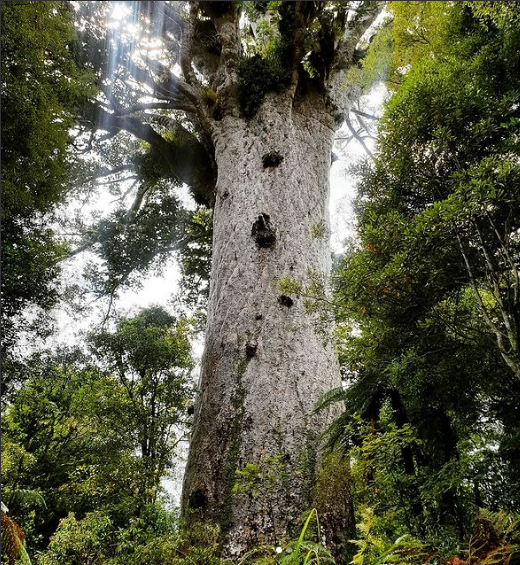
The AgathisAustralis is the most famous native tree in New Zealand, primarily because it is among the most giant trees in the world.
This Kauri tree is endemic to New Zealand, where it is the only indigenous member of the species Araucariaceae. It is reputed to produce more significant volumes of wood from single stems than any other timber tree globally.
Kauri grows slowly in its natural habitat, but it is one of the faster-growing indigenous conifers under favorable conditions. Its timber is considered one of the most superior due to its rot-proof nature and strength under moist conditions.
4. Cheetwhat Lake Cedar (Thujaplicata)-The Biggest Trees in the World
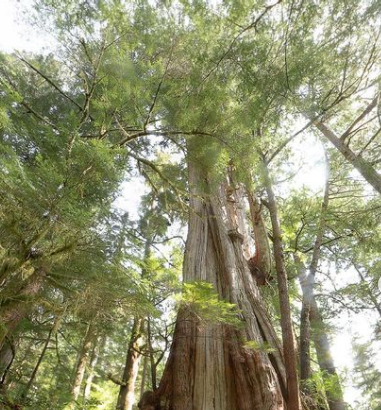
This Western Red Cedar tree is found in Pacific Rim National Park Reserve on Vancouver Island, at 15,870 cubic feet (450 m3). Cheetwhat Cedar is an evergreen coniferous tree in the cypress family discovered in 1988.
This species has other common names such as western arborvitae, western red cedar in the UK, Pacific red cedar, giant arborvitae, western, just Cedar, giant Cedar, or shingle wood.
It is a significantly colossal tree, ranging from 65 to 70 meters (210 to 230 feet) tall and 3 meters to 7 meters (10 to 23 feet) in trunk diameter. The bark is fibrous and longitudinally fissured.
It has a low to moderate fire resistance, as its thin bark, shallow roots, soft, dense branching habit, and flammable foliage confer little protection.
It is valued for its actual appearance, aroma, and its high natural resistance to decay. The wood is used for greenhouse fittings, shingles, posts, boat making, pilings, and many other purposes because moisture resistance and decay are more important than strength.
Cheetwhat Cedar is in a protected area which was created in 1971. Ascribing protected area status was necessary as over 80% of the forested area on Vancouver Island have been logged.
5. Nehemiah LoggoraleMeena(Eucalyptus globulus)
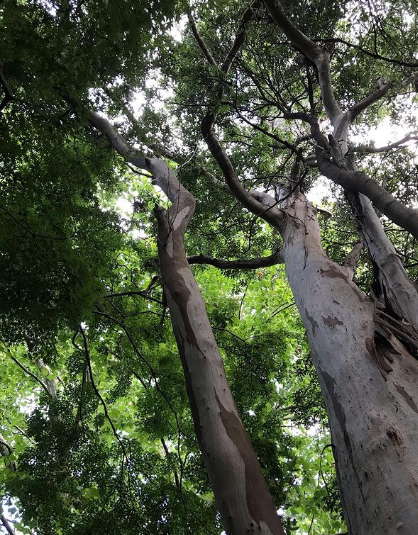
Another member of the eucalyptus family, this Tasmanian blue gum is one of the enormous trees of its kind. The name Neeminah Loggorale Meena means “mother and daughter” in the native Aboriginal language, and it was given by Aboriginal students of St. James College in Sydney.
Most of this species have a soft bark, babyish white and waxy leaves on the lower surface. They also have adult lanciform leaves, and can give rise to woody fruit.
At approximately 298 feet, this tree stands as a lone wolf in an almost clear-cut area. Fortunately, nature conservation laws managed to save this tree from cutting – Forestry Tasmania follows the rule that trees above 85 m height are spared from cutting…”
Another big tree of this species, RullahLongatyle, which was killed during Tasmanian bush fires in April 2019.
6. The Centurion (Eucalyptus regnans)-The Biggest Trees in the World
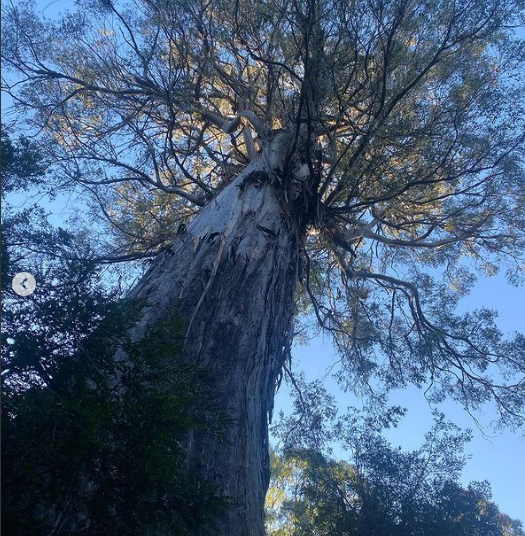
Broadly known as the Mountain Ash due to the similitude of its wood to that of the northern hemisphere ash, this is a very fast-growing tree, with mean height growth rates in young (< 22 years old) stands ranging from 1 meter (3 feet 3 in) to 2 meters (6 feet 7 in) per year.
This species is a medium-sized to very tall forest tree native to Tasmania and Victoria, Australia. It is a linear-trunked tree with an even greyish bark. It was narrowly saved in February 2019 after bush fires broke out in Southern Tasmania. The fire created a new hollow in the base of its trunk; fortunately, it now seems to have survived and continues to grow.
Centurion is the world’s tallest hardwood tree. It is found in Tasmania’s Arve Valley. In addition, it is the world’s tallest flowering plant standing at 330 feet. It now has signs of a broken branch near the top, which suggests that Centurion could grow even higher in the future.
Most trees bear notable names, but Centurion came about by coincidence. It was named not for its towering 100m height but for being the 100th monumental tree recorded as part of a more comprehensive Tasmanian tree-measuring project.
It is valued for its timber and has been harvested in large quantities in areas it grows.
7. Red Creek-fir (Pseudotsugamenziesii)
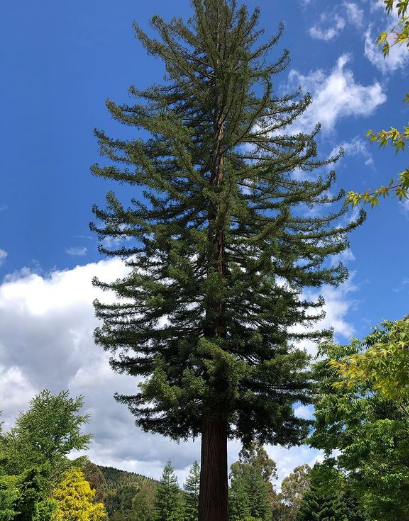
Red Creek fir is one record-setting Coast Douglas-fir.By volume, Red Creek Fir is the largest of its species situated in San Juan Valley, Vancouver Island in British Columbia, Canada, North America. It stands at nearly maximum heights of 100–120 meters (330–390 feet), and diameters up to 4.5–5.5 meters (15–18 feet) have been documented.
These trees are studied to live for exceedingly long periods. The tallest report of this evergreen conifer native is the Doerner Fir, located in Brummit Creek, Coos County, Oregon.
Coast Douglas-fir is the 2nd-tallest conifer globally, following the coast redwood and the third-tallest of all trees after Eucalyptus regnans. Currently, coast Douglas-fir trees are 60–75 meters (197–246 feet) or more in height and 1.5–2 meters (4.9–6.6 feet) in diameter.
Did you know over 82% of the original old-growth forests of Oregon and Washington had disappeared by the early 1980s? Hence Coast Douglas-fir is also considered an endangered species and therefore receives ‘soft’ protection through an Old-Growth Management Area. Still, the law mandates rigid protections for other forests such as this.
Douglas-fir is protected from fire by thick, corky bark, and they readily regenerate on burned sites with their lightweight, winged seeds. Its seeds feed small mammals, including chipmunks, mice, shrews, and red squirrels.
8. The Queets Spruce (Piceasitchensis)-The Biggest Trees in the World
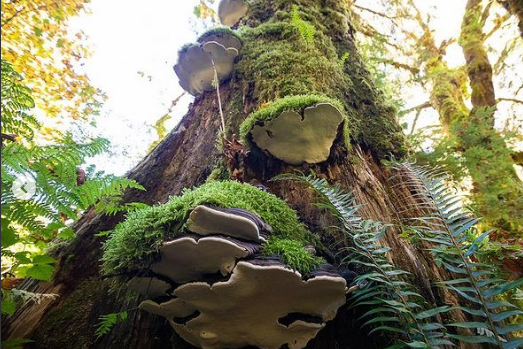
It is located somewhere in the United States Olympic National Park, Washington. Piceasitchensis is a giant, coniferous, evergreen tree growing to almost 100 meters (330 feet) tall, with a trunk width at breast height that can exceed 5 meters (16 feet). It is by far the enormous species of spruce and the fifth-largest conifer in the world.
The Queets Spruce has been roughly calculated to be about 350 to 450 years old. It also adds more than a cubic meter of wood by the year. The species Sitka spruce originates from the west coast of North America and is named after Sitka, Alaska.
Aside from being the world’s most giant spruce, it is also the second-largest species in the Pinaceae in terms of wood volume.
Sitka spruce is well adapted to cool, wet climates; hence its attenuated bark and shallow root system are not adapted to withstand fire damage, and it is thus highly susceptible.
Sitka spruce trees grow close together, forming a dense canopy that few plants can grow beneath.
Sitka spruce is of paramount importance in the production of timber and paper. Outside its native land, it is exceptionally appraised for its fast growth on poor soils and exposed sites where few other trees can flourish; In the UK, they account for around 50% of commercial plantations.
Interestingly, another coniferous, evergreen tree called the Raven’s Tower has reached record heights of 317 feet in California’s Prairie Creek Redwoods State Park, making it one of the tallest trees.
9. King Stringy (Eucalyptus obliqua)
Named King Stringy, you can find this beautiful brown top stringy bark tree in The Styx Valley, located adjacent to the Tasmanian Wilderness World Heritage Site on the island of Tasmania, Australia.
These trees, and this one, in particular, is named because of its thick, stringy bark, which provides considerable protection from fire. On the trunk, the bark is also fibrous and its branches bulkier. On thethinnest branches, the bark is sleek and grey and its adult leaves are lance like to curved likeshape. The flower buds are layed out in groups in an unbranched stalk.The fruits can be cup-shaped or barrel-shaped.
Standing at 282 feet and covering 337m3. The Tasmanian Oak is one of the most commercially critical ash-type species in Tasmania hardwoods. Its timber has average hardness and strength is used chiefly for pulp production, construction as well as manufacture.
10. The Alpine Ash (Eucalyptus delegatensis)-The Biggest Trees in the World
It is also found in southeastern Australia is located in Florentine Valley in Tasmania. Its commonly referred to as s’ gum-topped stringy bark’ in Tasmania and woolly butt in southern New South Wales.
This species grows to a height of 40–50 meters (130–160 feet), sometimes to 90 meters (300 feet). Its bark is rough, grey to black, fibrous, or stringy on the lower half of the trunk, smooth white to greyish.
Forests dominated by alpine ash in Tasmania grow in the undulating high country. This includes the Central Plateau, the North East Highlands, and the Western Tiers. The seeds of alpine ash need the cold ground conditions produced by several weeks of snow to germinate the following spring.
Even though it’s smaller than the Eucalyptus regnans, this medium to fast-growing tree, with a very straight trunk, is acknowledged for its high-quality wood, considered similar to oak.

